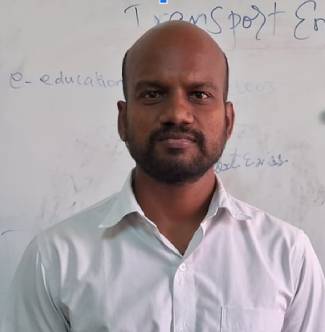Dr. Arul Veerappan
New York University, USA
Heavy metals in air pollution and health effects
ABSTRACT
Air pollution is one of the greatest environmental risks to health. It is a major cause of premature death and disease, also, it is the largest environmental health threat globally. By reducing air pollution levels, countries can reduce the burden of disease from stroke, heart disease, lung cancer, and both chronic and acute respiratory diseases, including asthma. Atmospheric particulate matter (PM) is of great concern to the public and to government agencies because of the health effects and haze episodes associated with it. PM has the strong potential for adsorbing toxic metals, which may then enter the human body through inhalation and have adverse physiological effects. There is growing evidence that heavy metals adsorbed to PM are crucial to the toxicity and adverse health effects of PM. Cadmium, lead and mercury, common air pollutants, are emitted mainly because of various industrial activities and contribute to the deposition and build-up in soils. Heavy metals are persistent in the environment and are subject to bioaccumulation in food-chains. Cadmium exposures are associated with kidney and bone damage. Cadmium has also been identified as a potential human carcinogen, causing lung cancer. Lead exposures have developmental and neurobehavioral effects on fetuses, infants, and children, and elevates blood pressure in adults. Mercury is also toxic in the elemental and inorganic forms, but the main concern is associated with the organic compounds, especially methylmercury that accumulates in the food-chain, the main route of human exposure. Furthermore, smoke produced from the Wildfire/Camp Fire exposed Californians to dangerous levels of particulate matter and contained concerning levels of toxic metal contaminants, including lead, which spiked for about 24 hours. Camp Fire, which burned for a 2.5-week period, elevated levels of lead and zinc were detected, as well as calcium, iron, and manganese. Smoke containing these metals traveled more than 150 miles and was detected in the air as far away as San Jose. Likewise, recent Canadian wildfire smoke exposure affected millions of New York city residents. Urban residents are often affected by either natural or manmade pollution cascades. The World Trade Center disaster is one of the examples. Even more than two decades after 9/11 terrorists attack, still hundreds of thousands of people remain at risk due to the exposure to toxic air. Carcinogens which include heavy metals from building materials, gases and jet fuel laced the air around each crash site, with the most severe toxicity among the ruins of the World Trade Center towers in New York City. Catastrophically, the research studies predict that these adverse health effects will continue for many decades to come. So, targeting heavy metals in air pollution is vital for mitigation for environmental health.
ABOUT THE SPEAKER
Dr. V. Arul holds PhD degree in Pharmacology and Environmental Toxicology from Dr. ALM Postgraduate Institute of Basic Medical Sciences, University of Madras, Taramani, Chennai, Tamil Nadu, India in 2000. He then received a Japan Science and Technology Agency STA fellowship and continued his research on PM2.5 and health effects at the National Institute for Environmental Studies, Tsukuba, Japan. Further, Dr. Arul moved to Cornell University, an Ivy League Institution in USA for his postdoctoral fellowship and continued as an instructor. He also served as overseas visiting professor in the department of Chemical Engineering at Anna University, Chennai. Currently, Dr. Arul works as an Assistant Professor in the Division of Environmental Medicine, Department of Medicine at New York University Grossman School of Medicine. His major areas of research are environmental toxicants such as heavy metals and air pollution including World Trade Center Particulate Matter and cardiopulmonary health effects and carcinogenesis. Dr. Arul has published his research work in high impact top tier journals such as PNAS, Nature Medicine, Translational Science etc. He has also presented his work in various national and international conferences.







